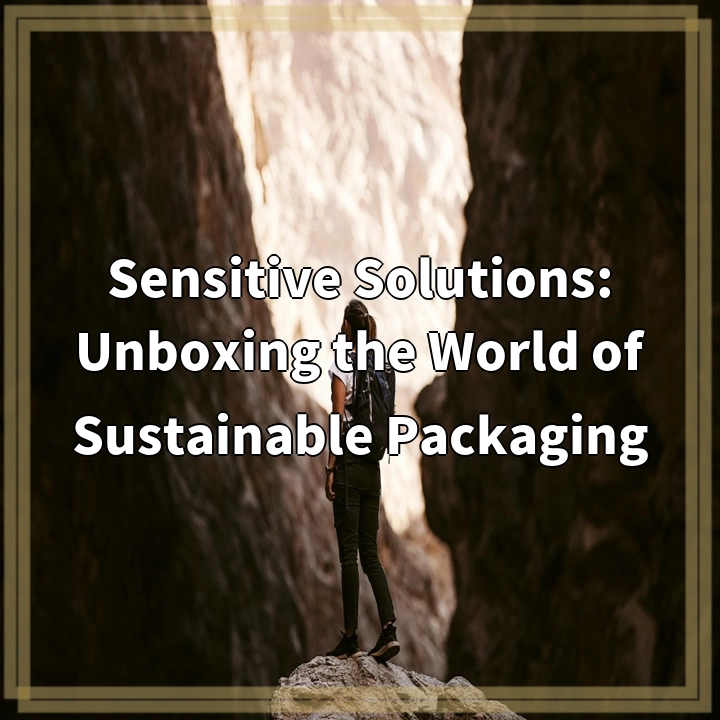
What is Sustainable Packaging?
Sustainable packaging refers to materials and design strategies that minimize environmental impact throughout a product’s lifecycle – from production to disposal. It aims to reduce resource consumption, waste generation, and greenhouse gas emissions associated with packaging, while also ensuring the protection and safe delivery of the product.
Real-World Problems Associated with Sustainable Packaging
Despite its numerous benefits, sustainable packaging still faces challenges in implementation and adoption. Some of the real-world problems associated with sustainable packaging are as follows:
1. Cost and Affordability
One of the key challenges is the perceived or actual higher cost of sustainable packaging materials and design. Companies often struggle with finding a balance between sustainability and affordability, as the use of eco-friendly materials may increase production and packaging expenses. Finding cost-effective alternatives that meet sustainability goals is imperative for widespread adoption.
2. Performance and Functionality
Sustainable packaging materials are not always able to match the performance and functionality of conventional options. For instance, some eco-friendly materials may lack durability or may not provide adequate protection for delicate or perishable products. Ensuring that sustainable packaging meets the necessary functional requirements is essential to gaining consumer trust and acceptance.
3. Consumer Education and Awareness
Many consumers are still not fully aware of the environmental impact of packaging waste and the potential benefits of sustainable alternatives. Lack of knowledge and information can hinder the demand for sustainable packaging. It is important to educate consumers about the environmental benefits, encourage conscious purchasing decisions, and communicate the value of sustainable packaging to drive adoption.
4. Infrastructure and Recycling
Efficient recycling and waste management infrastructure play a crucial role in the success of sustainable packaging. However, in many regions, the infrastructure for collecting, sorting, and processing sustainable packaging materials is inadequate. Expanding and improving recycling facilities and educating consumers about proper disposal methods are essential for a circular economy and the overall success of sustainable packaging initiatives.
5. Standardization and Regulation
The absence of standardized guidelines and regulations for sustainable packaging can pose challenges for businesses. Lack of clarity in terms of measurement metrics, certification systems, and labeling requirements can hinder the adoption and trustworthiness of sustainable packaging. Establishing clear and universally accepted standards and regulations can create a level playing field and encourage consistent practices across industries.

Potential Solutions to Sustainable Packaging Challenges
Addressing the real-world problems associated with sustainable packaging requires innovative solutions and collaborative efforts from various stakeholders. Here are some potential solutions to overcome the challenges outlined above:
1. Research and Development
Investing in research and development can lead to the creation of more affordable and high-performing sustainable packaging materials. Continued innovation can help overcome the cost and functionality barriers by developing alternative materials that are both eco-friendly and cost-effective.
2. Consumer Education Campaigns
Launching educational campaigns can increase consumer awareness and educate them about the importance of sustainable packaging. Brands can collaborate with environmental organizations or use social media platforms to disseminate information about the benefits of sustainable packaging, encouraging consumers to make conscious purchasing decisions.
3. Collaboration and Partnerships
Collaboration between businesses, policymakers, and recycling organizations is crucial to improving the infrastructure and recycling systems for sustainable packaging. By working together, stakeholders can develop effective collection and recycling programs, ensuring that sustainable packaging materials are properly managed and reintegrated into the circular economy.
4. Industry Standards and Regulations
Establishing consistent industry standards and regulations can provide clarity and guidance for businesses in implementing sustainable packaging practices. Governments and regulatory bodies can work towards developing and enforcing sustainable packaging guidelines, including certification systems, measurement metrics, and labeling requirements. This harmonization will facilitate fair competition and foster consumer trust.
5. Collaboration with Suppliers and Packaging Experts
Engaging suppliers and collaborating with packaging experts can help businesses explore innovative packaging solutions that meet sustainability goals without compromising functionality. Together, they can identify alternative materials, design creative packaging solutions, and optimize the packaging process to reduce waste and environmental impact.















